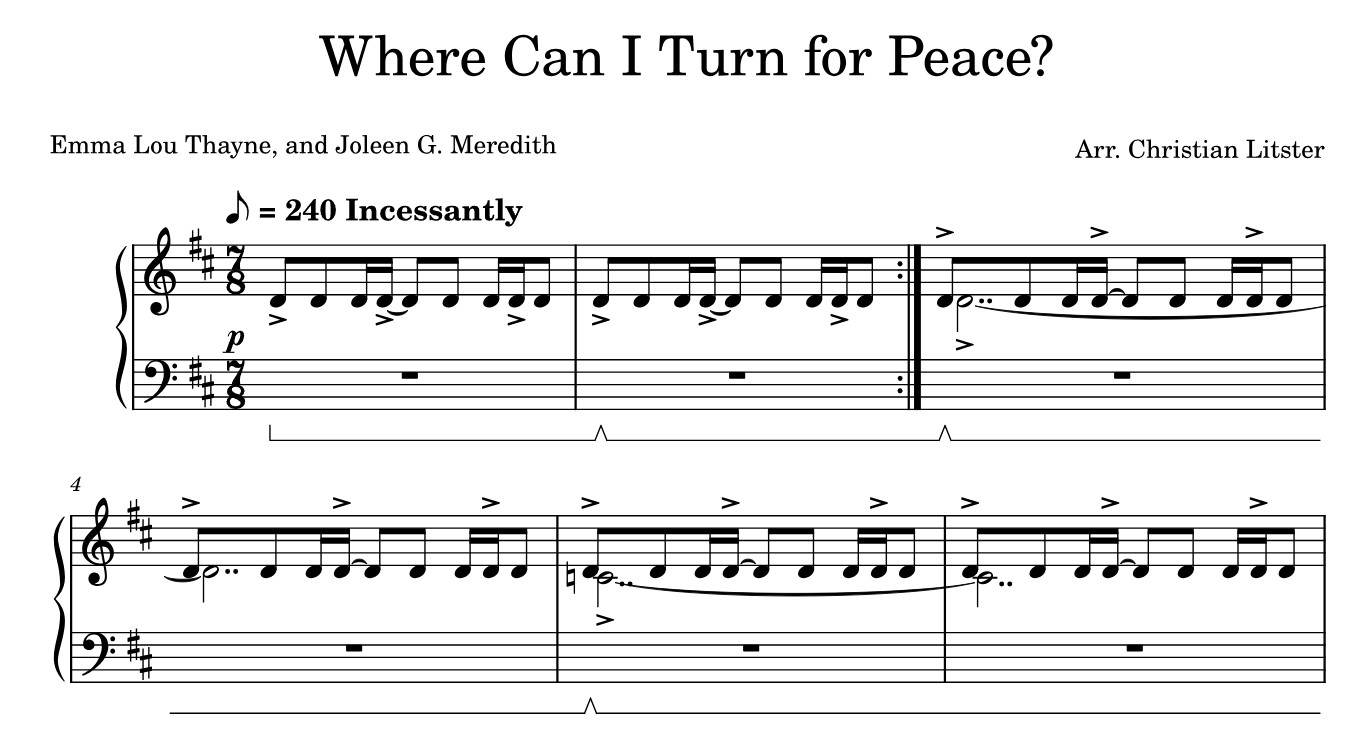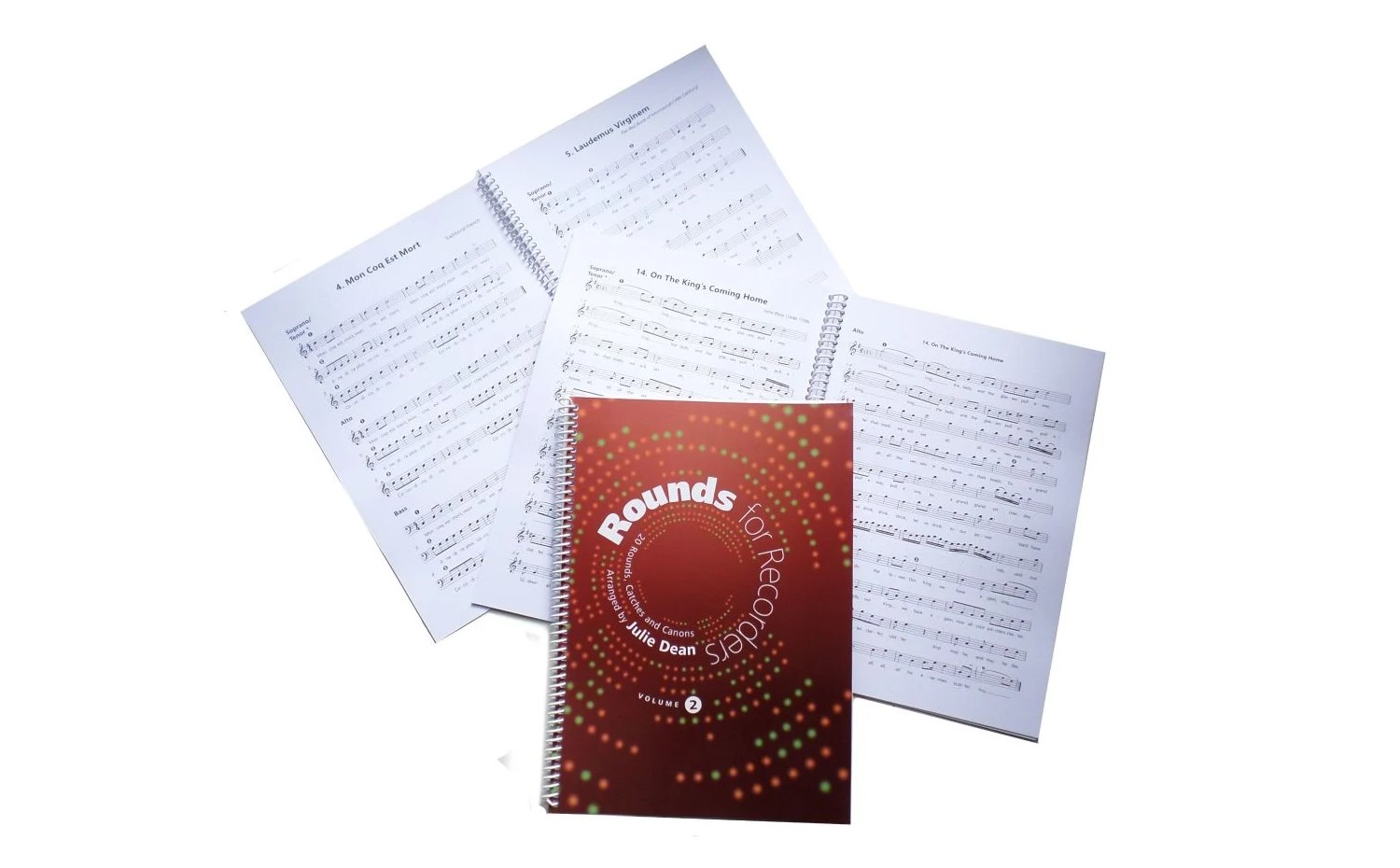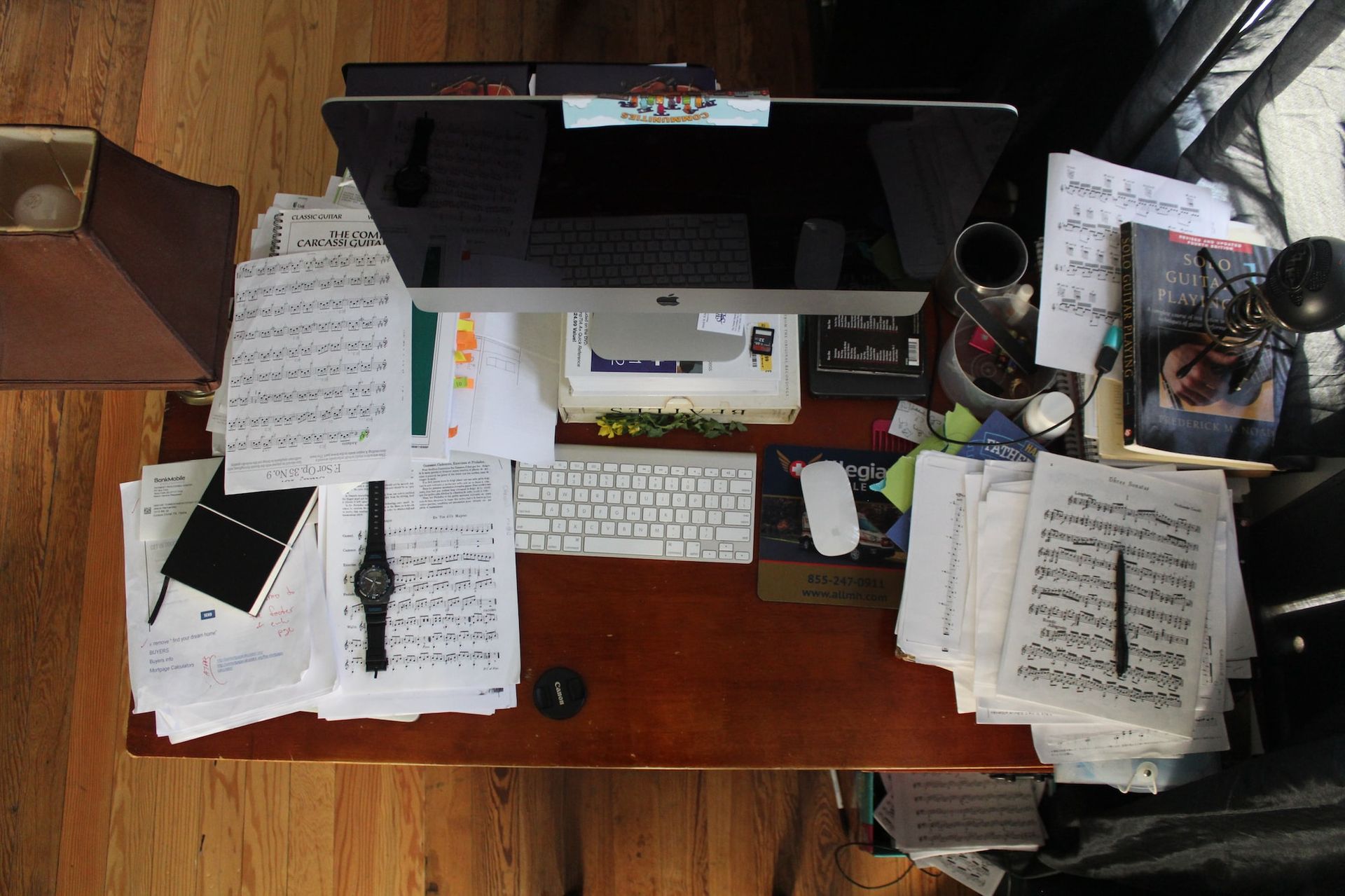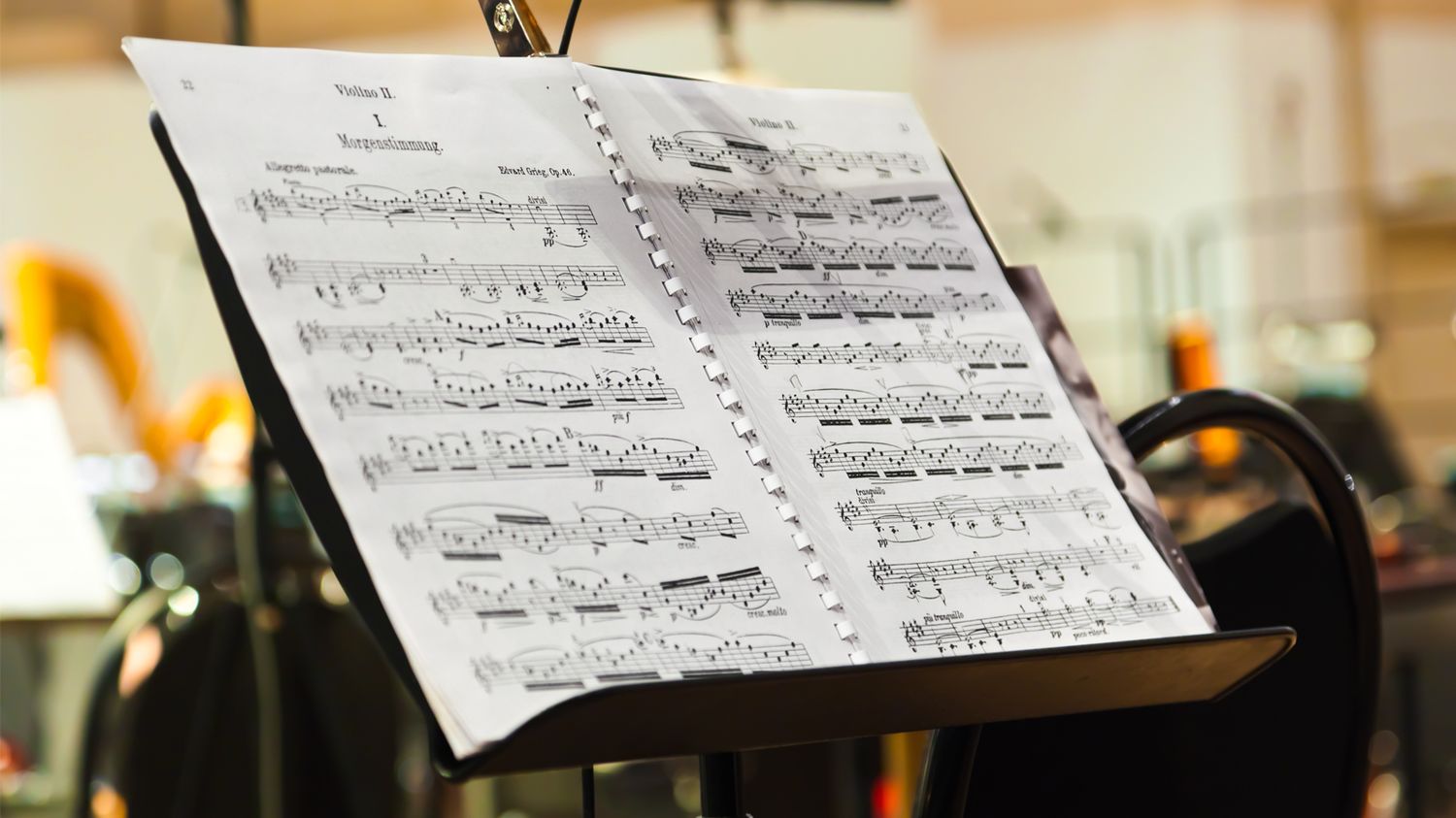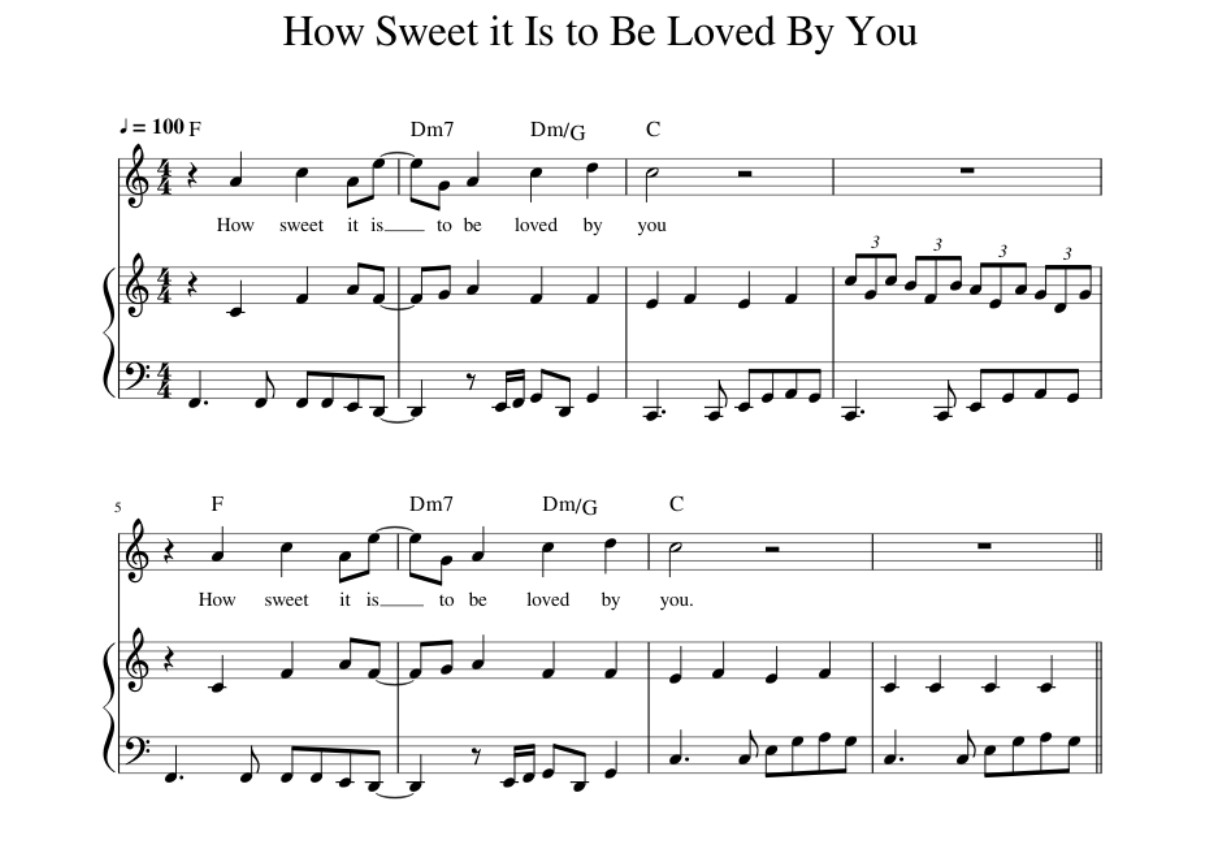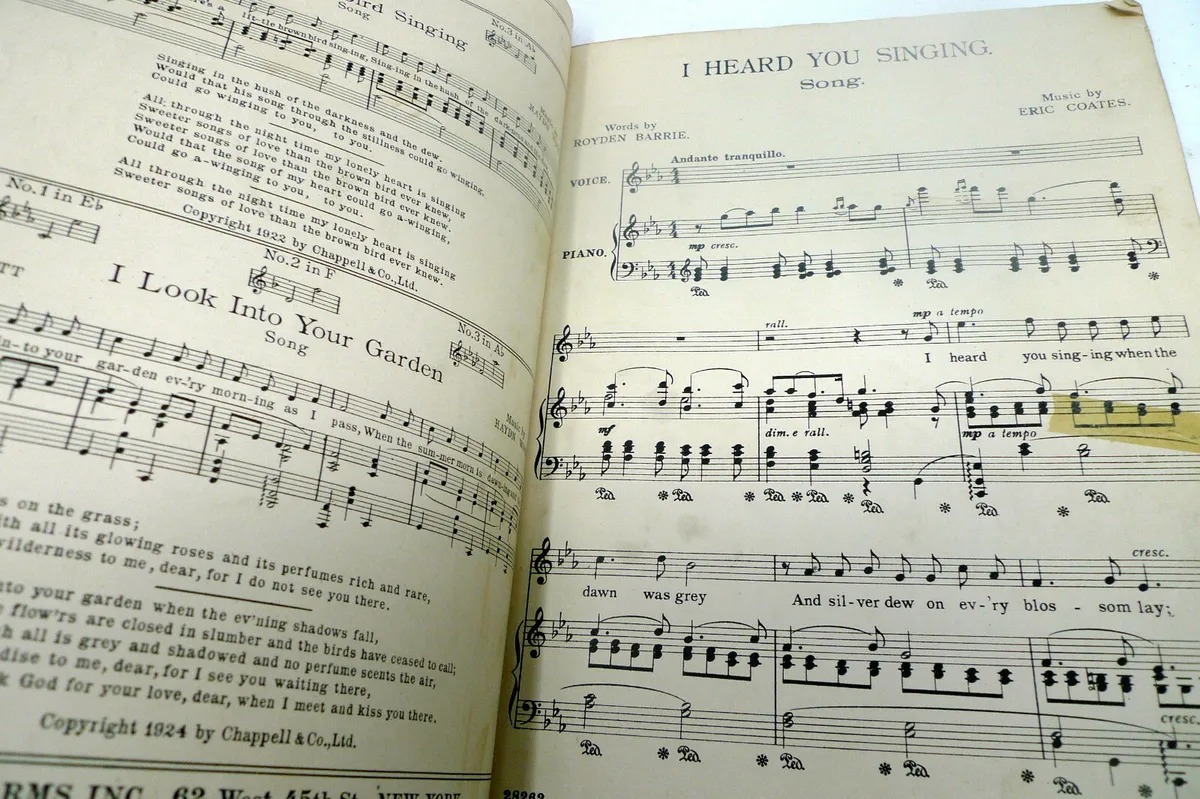Home>Production & Technology>Sheet Music>How To Turn Midi Into Sheet Music
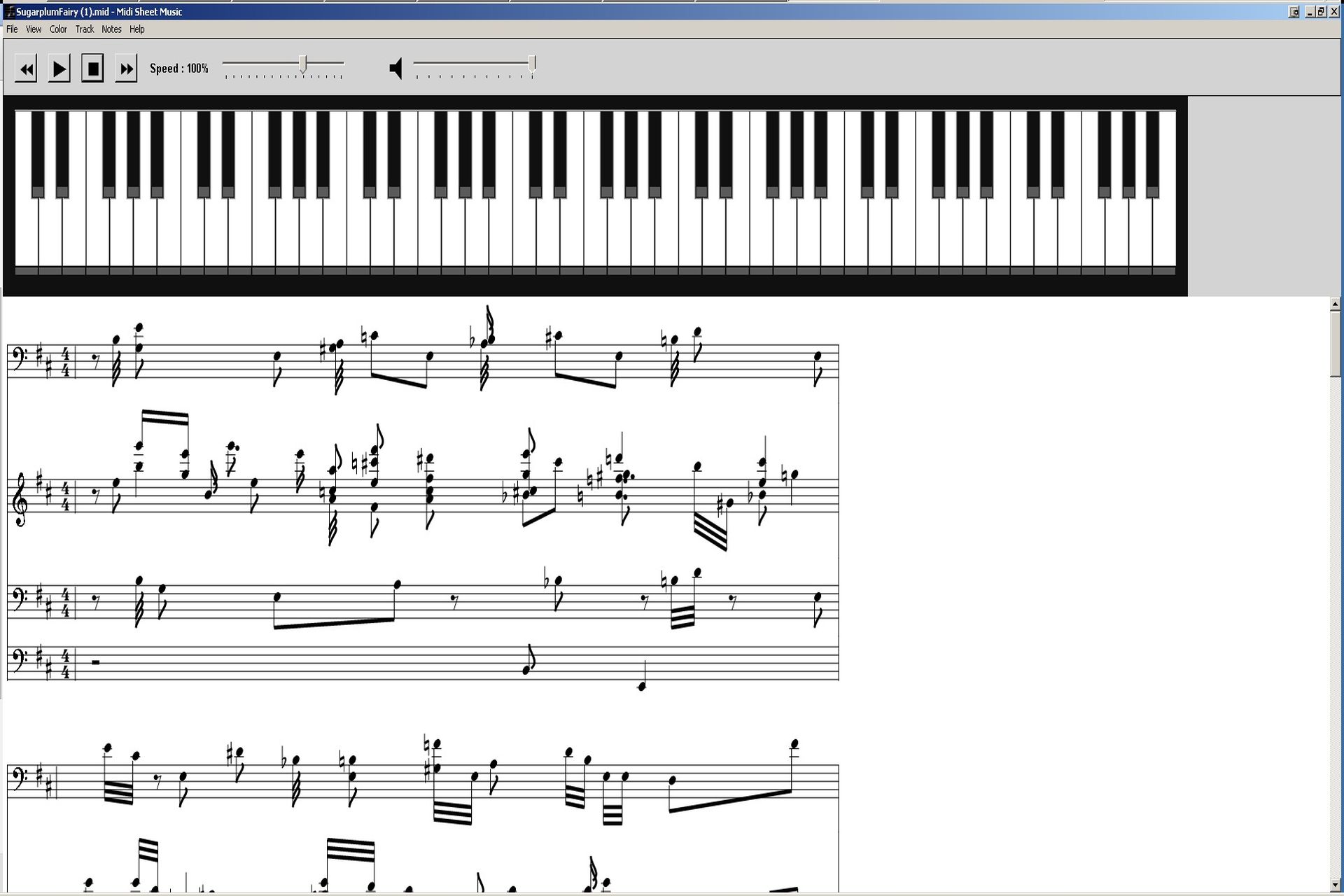

Sheet Music
How To Turn Midi Into Sheet Music
Modified: February 22, 2024
Learn how to convert MIDI files into sheet music with our step-by-step guide. Transform your musical compositions into printable notation effortlessly. Download now!
(Many of the links in this article redirect to a specific reviewed product. Your purchase of these products through affiliate links helps to generate commission for AudioLover.com, at no extra cost. Learn more)
Table of Contents
Introduction
Sheet music has been an integral part of the music industry for centuries, allowing musicians to accurately recreate compositions and share their musical creations with others. However, with the advancement of technology, a new form of music notation has emerged – MIDI (Musical Instrument Digital Interface). MIDI files have become increasingly popular due to their versatility and ease of editing. While MIDI files are great for playback and editing, many musicians still prefer the traditional sheet music format for performance and study purposes. That’s why the ability to convert MIDI to sheet music is crucial for those who want to play or share their musical creations in the written format.
Converting MIDI to sheet music is a process that requires specialized tools and techniques. Thankfully, there are several methods available to accomplish this task, ranging from using music notation software to online converters and manual transcription. In this article, we will explore these methods and provide tips and tricks for accurate MIDI to sheet music conversion.
Whether you’re a composer wanting to transcribe your MIDI compositions into sheet music, a teacher looking to provide sheet music to your students, or a musician who prefers the traditional notation format, understanding how to convert MIDI to sheet music will expand your musical possibilities and enhance your ability to share and perform your music.
What is MIDI?
MIDI, which stands for Musical Instrument Digital Interface, is a protocol that allows electronic musical instruments, computers, and other devices to communicate with each other. It was first introduced in the early 1980s as a way to standardize the communication between different brands and types of synthesizers.
MIDI does not transmit audio signals, but rather digital data that represents musical notes, dynamics, and other musical parameters. This data includes information such as note duration, pitch, velocity, and even control messages for parameters like volume, modulation, and expression.
MIDI files, often with the “.mid” extension, contain this digital data and can be played back by MIDI-compatible devices or software. MIDI technology revolutionized the music industry by making it easier to create, edit, and play back music. It opened up new possibilities for composers, producers, and musicians, as they could now easily create complex arrangements and experiment with different sounds.
MIDI files have become the standard for electronic and computer-based music production. They are widely used in genres like electronic music, film scoring, game soundtracks, and more. MIDI offers flexibility and control over the musical elements, allowing musicians to easily edit and rearrange their compositions.
One of the main advantages of MIDI is its scalability. Since MIDI files only contain digital data, they are incredibly small in size compared to audio recordings. This makes MIDI files ideal for sharing and transferring music over the internet or storing large libraries of musical compositions without taking up much disk space.
While MIDI files themselves are not traditional sheet music, they serve as a valuable tool for composing, arranging, and recording music. However, for musicians who prefer to read and perform music from sheet music, converting MIDI to sheet music is essential.
The Importance of Turning MIDI into Sheet Music
Converting MIDI files into sheet music serves a crucial purpose for musicians, composers, and music enthusiasts. While MIDI files are excellent for playback and editing purposes, there are several reasons why the conversion to sheet music is valuable:
- Performance and Interpretation: Sheet music provides a visual representation of the music, including the rhythm, dynamics, and expression. This allows musicians to interpret and perform the piece accurately, capturing the nuances intended by the composer. Sheet music also provides valuable insight into phrasing, articulation, and various musical markings that may not be easily conveyed through a MIDI file.
- Collaboration: Sheet music serves as a common language for musicians to collaborate and perform together. By converting MIDI files to sheet music, musicians can easily share their compositions with others and work together to bring the music to life. This is particularly useful in large ensembles, choirs, and orchestras where multiple musicians need to read from the same notation.
- Musical Education and Study: Sheet music is an essential tool for teaching and learning music. It allows students to practice reading notation, develop their sight-reading skills, and study musical concepts in a structured and organized format. Converting MIDI to sheet music enables teachers to provide their students with accurate and comprehensive materials for learning and practicing.
- Preservation and Documentation: Sheet music has been used for centuries to preserve musical compositions. By converting MIDI files to sheet music, musicians ensure that their compositions are recorded in a traditional and timeless format. Sheet music can be easily stored, shared, and referenced for future performances, recordings, or publications.
- Accessibility: While MIDI files are primarily digital and require specialized software or hardware to play back, sheet music can be accessed and read by musicians regardless of their technological setup. Sheet music allows for a wide range of performances, from traditional instruments to vocalists, and can be adapted to various skill levels and instruments.
In summary, by converting MIDI files to sheet music, musicians gain a tangible and versatile format that allows for accurate performance, collaboration, education, preservation, and accessibility. It bridges the gap between digital notation and traditional music notation, combining the advantages of both worlds for a seamless and enriched musical experience.
Methods for Converting MIDI to Sheet Music
Converting MIDI files to sheet music requires specialized tools and techniques. Fortunately, there are several methods available to accomplish this task, each with its own advantages and considerations. Here are three common methods for converting MIDI to sheet music:
- Method 1: Using Music Notation Software: Music notation software, such as Sibelius, Finale, or MuseScore, offers powerful tools for converting MIDI to sheet music. These software programs allow you to import MIDI files and automatically transcribe them into standard notation. They typically provide a user-friendly interface where you can edit and fine-tune the converted sheet music to match your desired layout and musical style. Music notation software offers flexibility and control over every aspect of the sheet music, including key signatures, time signatures, dynamics, articulations, and more.
- Method 2: Online MIDI to Sheet Music Converters: There are various online tools and websites that specialize in MIDI to sheet music conversion. These converters typically allow you to upload your MIDI file and convert it into a downloadable and printable sheet music PDF. While online converters provide a convenient solution, keep in mind that the accuracy of the conversion may vary depending on the complexity of the MIDI file and the algorithm used by the converter.
- Method 3: Manual Transcription: For more precise and customized results, manual transcription is another option for converting MIDI to sheet music. Manual transcription involves listening to the MIDI file and transcribing the music by hand onto sheet music. This method requires a good ear for music, knowledge of music notation, and patience. Manual transcription allows for meticulous attention to detail and is often used by professional music transcribers or composers who want complete control over the final sheet music result.
Each conversion method has its own pros and cons, and the choice depends on your specific needs, expertise, and available resources. Music notation software provides the most comprehensive and customizable solution, while online converters offer convenience for quick conversions. Manual transcription allows for the highest level of accuracy and customization, but it can be time-consuming.
Regardless of the method you choose, it is essential to review the converted sheet music carefully and make any necessary adjustments to ensure accuracy. Factors such as tempo, rhythmic intricacies, and dynamic markings may require manual fine-tuning for a faithful representation of the original MIDI composition.
Experiment with different methods and find the one that suits your needs and preferences the best. With the right tools and techniques, you can successfully convert MIDI files into high-quality sheet music ready for performance, collaboration, or study.
Method 1: Using Music Notation Software
One of the most effective ways to convert MIDI files to sheet music is by using music notation software. Popular software programs like Sibelius, Finale, and MuseScore offer powerful tools for importing MIDI files and automatically transcribing them into standard notation.
Here’s a step-by-step guide on how to convert MIDI to sheet music using music notation software:
- Choose and Install Music Notation Software: Select a music notation software that suits your needs and install it on your computer. Some software programs offer free versions, while others have paid versions with more advanced features.
- Create a New Score: Open the music notation software and create a new score or project. Set the appropriate key signature, time signature, and staff arrangement that matches the MIDI file you want to convert.
- Import the MIDI File: Look for the option to import or open a MIDI file within the software. Navigate to the location where your MIDI file is saved and select it for import. The software will analyze the MIDI data, including notes, durations, and dynamics.
- Review and Edit: Once the MIDI file is imported, the software will generate a preliminary sheet music arrangement. Take the time to review and edit the sheet music to ensure accuracy and make any necessary adjustments. This may involve correcting rhythms, adding or modifying articulations, dynamics, adding lyrics, or adjusting layout elements.
- Customize the Score: Use the available tools and features in the music notation software to customize the score according to your preferences. This can include adjusting the font style, adding performance markings, adjusting spacing, and other layout elements.
- Playback and Fine-Tuning: Most music notation software allows you to play back the score using MIDI playback functionality. Listen attentively to the playback to ensure the accuracy and musicality of the converted sheet music. Make any necessary adjustments based on the playback, including tempo, dynamics, and phrasing.
- Save and Export: Once you are satisfied with the converted sheet music, save your project and export it in a format that suits your needs. Common options for export include PDF, MIDI, MusicXML, and audio formats. Choose the format that allows for easy printing, sharing, or further editing.
Using music notation software offers the advantage of precise and customizable MIDI to sheet music conversions. You have full control over formatting, layout, playback options, and fine-tuning of the sheet music. However, it’s important to note that the accuracy of the conversion still relies on the quality of the original MIDI file and the capabilities of the software algorithm.
Explore different music notation software options and find the one that best aligns with your workflow and requirements. With dedicated practice and familiarity with the software features, you can efficiently convert MIDI files to high-quality and accurate sheet music ready for performance, study, or collaboration.
Method 2: Online MIDI to Sheet Music Converters
Another convenient method for converting MIDI files to sheet music is by using online MIDI to sheet music converters. These web-based tools offer a quick and accessible way to transform MIDI files into printable and downloadable sheet music.
Here’s how to convert MIDI to sheet music using online MIDI to sheet music converters:
- Select a MIDI to Sheet Music Converter: Search for a reputable online MIDI to sheet music converter. There are several options available, such as Flat, Noteflight, and MIDI to Sheet Music MusicXML Converter. Choose a converter that fits your needs and has positive user reviews.
- Upload the MIDI File: Once you’ve chosen a converter, locate the option to upload or import your MIDI file. Some converters allow you to drag and drop the file onto their website, while others require browsing and selecting the file from your computer. Follow the instructions provided by the converter to upload the MIDI file.
- Conversion and Preview: After uploading the MIDI file, the converter will commence the conversion process. This may take a few moments, depending on the complexity of the MIDI file and the efficiency of the converter. Once the conversion is complete, you will typically be presented with a preview of the sheet music.
- Review and Edit (if possible): Take the time to review the converted sheet music for accuracy and completeness. Some online converters may offer basic editing capabilities, allowing you to adjust layout elements, add performance indications, transpose the key, or make other modifications. If available, make any necessary edits to ensure the best possible representation of your MIDI file.
- Save and Download: If you are satisfied with the converted sheet music, proceed to save and download the resulting file. Most online converters allow you to save the sheet music as a PDF file, which can be easily printed or shared digitally. Some converters may offer additional download formats such as MusicXML or MIDI.
Online MIDI to sheet music converters offer convenience and speed when you need a quick conversion without the hassle of installing software. However, it’s important to note that the accuracy and quality of the conversion may vary depending on the converter’s algorithms and the complexity of the MIDI file. It is recommended to review and verify the converted sheet music for any errors or inconsistencies.
Experiment with different online MIDI to sheet music converters to find the one that best suits your needs. Keep in mind that some converters may have limitations on the size of the MIDI file or the number of conversions allowed. Also, be cautious of converters that require email registration or have hidden fees.
Overall, online MIDI to sheet music converters provide a convenient solution for quickly obtaining printable sheet music from MIDI files. They are particularly useful for users who require a straightforward conversion process without the need for complex editing or customization.
Method 3: Manual Transcription
For the most precise and customized results, manual transcription is an option for converting MIDI files to sheet music. Manual transcription involves listening to the MIDI file and painstakingly transcribing the music by hand onto sheet music.
Here’s how to convert MIDI to sheet music using manual transcription:
- Select a Music Notation Software: Choose a music notation software that suits your needs and install it on your computer. This software will be used to transcribe the MIDI file into sheet music.
- Listen to the MIDI File: Open the MIDI file in a media player or MIDI sequencer and listen attentively to the music. Pay close attention to the nuances, phrasing, dynamics, and overall structure of the composition. Take note of any instruments or voices that are present in the MIDI file.
- Start Transcribing: Begin transcribing the music onto the sheet music using the music notation software. Choose the appropriate staff arrangement and key signature that reflects the original MIDI composition. Use the software’s tools and features to accurately notate the notes, durations, dynamics, and other musical elements. Take your time and ensure the transcription is a faithful representation of the original MIDI file.
- Review and Edit: Once the initial transcription is complete, review the sheet music to check for accuracy and make any necessary adjustments. Listen to the MIDI file while following along with the sheet music to identify any discrepancies or errors. Edit the sheet music accordingly to ensure it matches the original composition as closely as possible.
- Fine-Tuning: Fine-tune the sheet music by adding performance indications such as articulations, dynamics, and other musical markings. Ensure that the sheet music captures the musical expression and intention of the original MIDI composition. Consider the phrasing, tempo variations, and any other musical nuances that may enhance the performance of the piece.
- Save and Export: Once you are satisfied with the manual transcription, save the sheet music project in the desired format, such as PDF or MusicXML. This will make it easy to print, share, and distribute the sheet music.
Manual transcription allows for meticulous attention to detail and complete control over the final sheet music result. It is a labor-intensive process that requires a good ear for music, knowledge of music notation, and patience. Manual transcription is often used by professional music transcribers, composers, or musicians who want to have precise control over every element of the sheet music.
While manual transcription offers unparalleled accuracy, it can be time-consuming, especially for complex MIDI files. It is essential to have a deep understanding of music notation and a good sense of rhythm and pitch. However, the effort put into manual transcription can result in highly accurate and customized sheet music that faithfully represents the original MIDI composition.
Consider the complexity of the MIDI file, your level of expertise, and the time available before deciding on manual transcription. It is worth embracing the challenge if you have a strong musical background and enjoy the intricacies of transcribing music from MIDI to sheet music.
Tips and Tricks for Accurate MIDI to Sheet Music Conversion
Converting MIDI files to sheet music requires attention to detail and careful consideration of various musical elements. To ensure accurate and high-quality conversions, here are some tips and tricks to keep in mind:
- Choose the Right Software: Select a music notation software that suits your needs and provides the necessary tools for MIDI to sheet music conversion. Research different software options and consider user reviews and recommendations.
- Check MIDI File Quality: Before converting a MIDI file, make sure it is of good quality and accurately represents the intended composition. Low-quality or incorrectly labeled MIDI files may result in inaccurate sheet music conversions.
- Adjust Tempo and Time Signature: Ensure that the tempo and time signature settings in the software match the original MIDI file. This will affect the accuracy of the rhythm and timing in the resulting sheet music.
- Review Imported Notes: After importing the MIDI file, carefully review the notes generated by the software. Pay attention to the accuracy of note durations, pitches, and any potential errors or omitted notes.
- Use Playback Functionality: Take advantage of the playback functionality in the music notation software to listen to the converted sheet music. This can help identify any discrepancies or areas requiring adjustment.
- Fine-Tune Dynamics and Articulations: Pay attention to dynamics, articulations, and other expressive markings in the original MIDI file. Add or adjust these elements in the sheet music to accurately convey the intended musical expression.
- Check Instrument Translations: Verify that the assigned instruments in the converted sheet music match the original MIDI file. Some software may misinterpret or assign incorrect instruments, so it’s important to double-check and make any necessary adjustments.
- Manually Adjust Layout: Depending on the software used, you may need to manually adjust the layout elements, such as system breaks, page breaks, and spacing. Ensure that the resulting sheet music is easy to read and visually appealing.
- Proofread and Edit: Once the conversion is complete, thoroughly proofread the sheet music for any errors or inconsistencies. Listen to the MIDI file alongside the sheet music to catch any discrepancies and make any necessary corrections.
- Consult a Music Professional: If you encounter difficulties or have complex MIDI files, consider consulting a professional music transcriber or music educator who can provide guidance and assist with the conversion process.
Remember that MIDI to sheet music conversion may not always be 100% accurate due to the inherent differences between MIDI and sheet music notation. It’s important to use these tips and tricks to strive for the most precise and faithful representation of the original MIDI composition.
Take your time, review the results attentively, and make any necessary adjustments to ensure the final sheet music captures the essence and intention of the original MIDI file. With practice and attention to detail, you can achieve accurate and professional-quality conversions that enhance your music performance and study experience.
Conclusion
Converting MIDI files to sheet music opens up a world of possibilities for musicians, composers, and music enthusiasts. Whether you prefer the traditional notation format, want to collaborate with other musicians, or simply want to study and perform your MIDI compositions with more accuracy, knowing how to convert MIDI to sheet music is invaluable.
In this article, we explored three common methods for converting MIDI to sheet music. Using music notation software allows for precise and customizable conversions, while online MIDI to sheet music converters provide quick and accessible solutions. Manual transcription offers the utmost control and accuracy, albeit being a time-consuming process.
Regardless of the method you choose, it’s important to review and fine-tune the resulting sheet music to ensure accuracy and musicality. Pay attention to details like dynamics, articulations, and layout elements to create professional, performance-ready sheet music.
Remember to consider the strengths and limitations of each conversion method and tailor your approach based on your specific needs, expertise, and available resources.
Converting MIDI files to sheet music allows for easier collaboration, accurate performance, enhanced musical education, and timeless preservation of musical compositions. Embracing the conversion process expands your musical possibilities and ensures that your music can be shared and enjoyed by others in the traditional written format.
So, whether you’re a composer, teacher, performer, or music enthusiast, mastering the art of converting MIDI to sheet music will undoubtedly enrich your musical journey and deepen your connection to the world of music notation.

